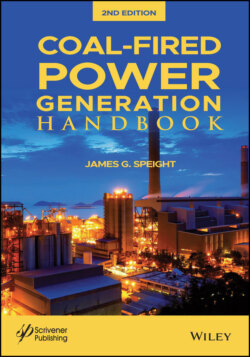Читать книгу Coal-Fired Power Generation Handbook - James Speight G., James G. Speight - Страница 26
1.6.4 Undiscovered Reserves
ОглавлениеOne major issue in the estimation of coal (or for that matter any fossil fuel or mineral) resource is the all too frequent use of the term “undiscovered” resources. Caution is advised when using such data, as might be provided to “substantiate” such reserves, as they are very speculative and are regarded as many energy scientists as having little value other than being unbridled optimism. And perhaps, opportunism and/or charlatanism are being applied depending upon the resource under speculation and the potential market for the product.
The differences between the data obtained from these various estimates can be considerable but it must be remembered that any data related to the reserves of natural gas (and, for that matter, related to any other fuel or mineral resource) will always be open to questions related to the degree of certainty (Speight, 2104).
There are three important items that counteract the guesswork applied to undiscovered resources: (a) the actual discoveries of new coal reserves; (b) the development of improved mining technologies for already known coal reserves; and (c) estimates of the coal resource base that are derived from known resource properties where the whole of the resource is not explored.
It should also be remembered that the total resource base of any fossil fuel (or, for that matter, of any mineral) will be dictated by economics (Nederlof, 1988). Therefore, when coal resource data are quoted some attention must be given to the cost of recovering those reserves. And, most important, the economics must also include a cost factor that reflects the willingness to secure total, or a specific degree of, energy independence, including some serious consideration of the very real environmental aspects of coal usage.
On the basis of these definitions, the total recoverable reserves of coal around the world are estimated to be on the order of at 950 billion tons (950 x 109 tons), indicating a reserves-to-production ratio of 126 years (International Energy Agency, 2010; EIA 2010, 2011, 2012a, 2012b). Furthermore, because recoverable reserves are a subset of total coal resources, recoverable reserve estimates for a number of regions with large coal resource bases (notably, China and the United States) could increase substantially as coal mining technology improves and additional geological assessments of the coal resource base are completed.
Although coal deposits are widely distributed, the majority (approximately 79%) of the recoverable reserves of the world are located in five regions: (i) the United States, (ii) Russia, (iii) China, (iv) Europe and Eurasia outside of Russia, and (v) Australia and New Zealand. By rank, anthracite, and bituminous coal account for approximately 47% of the estimated worldwide recoverable coal reserves on a tonnage basis, subbituminous coal accounts for 30%, and lignite accounts for 23%. As these numbers indicate, the United States has a vast supply of coal (approximately 28% of world reserves and more than 1,600 billion tons – 1,600 x 109 tons – of the remaining coal resources. The United States is also the second- largest coal producer in the world (after China) and annually produces more than twice as much coal as India, the third-largest producer of coal (Höök and Aleklett, 2009; EIA, 2010, 2011, 2012a, 2012b).
The quality and geological characteristics of coal deposits are important parameters for coal reserves. Coal is a heterogeneous source of energy, with quality (for example, characteristics such as heat, sulfur, and ash content) varying significantly by region and even within individual coal seams. At upper levels of coal quality are premium-grade bituminous coals, or coking coals, used to manufacture coke for the steelmaking process. Coking coals produced in the United States have an estimated heat content of 26.3 million Btu per ton and relatively low sulfur content of approximately 0.9% by weight. At the other end of the spectrum are reserves of low-Btu lignite – on a Btu basis, lignite reserves show considerable variation (International Energy Agency, 2010; EIA, 2010, 2011, 2012a, 2012b).
